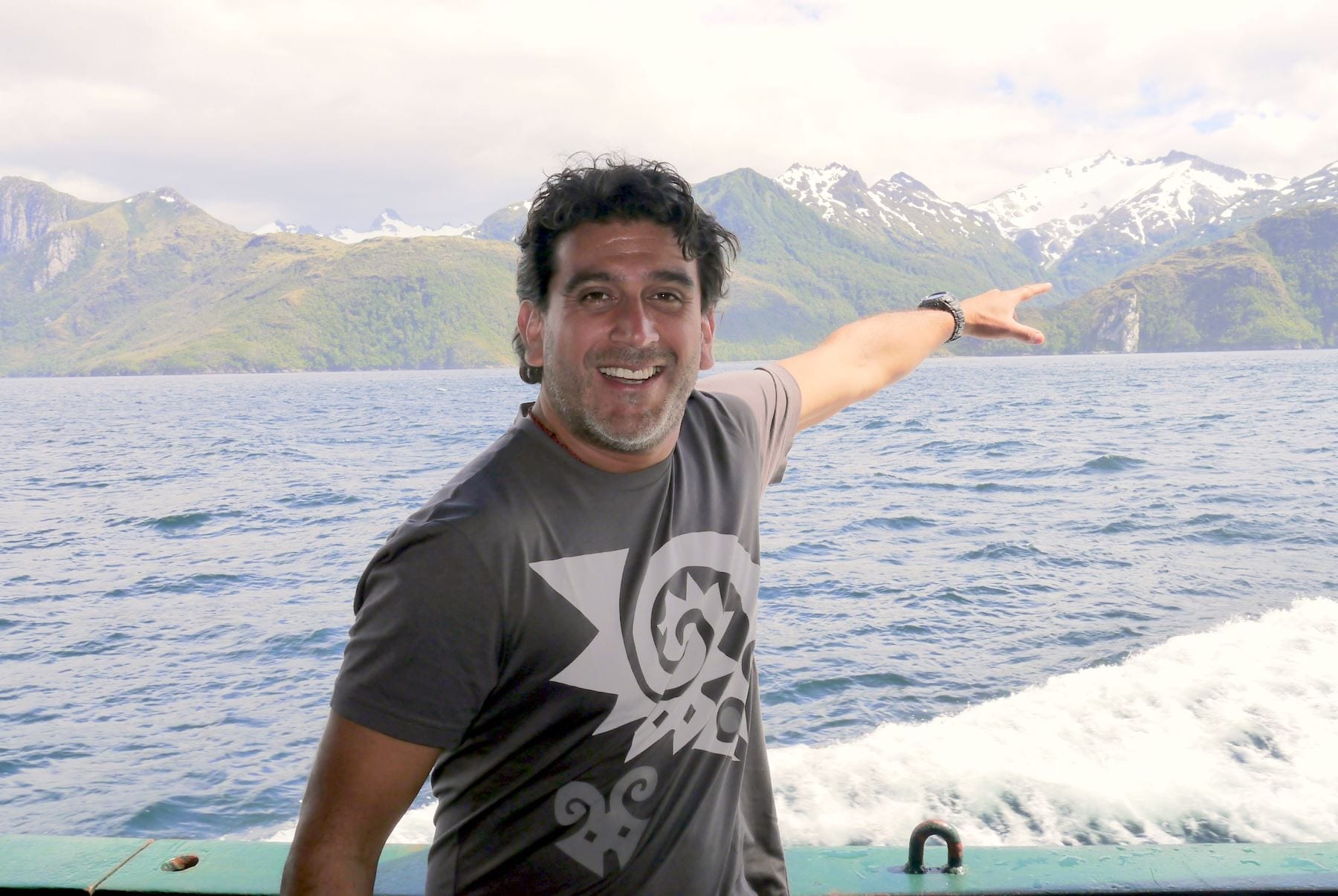Contenido de Peruvian Airlines
“We still don’t really know Peru. We don’t recognize what we have as a path to development. People from the interior are proud of what they have, thankfully. Unlike Lima, where people tend to be more impersonal.”
— Manolo del Castillo
That’s how openly Manolo del Castillo speaks—a journalist passionate about life, adventure, and above all, his love for Peru.
Manolo Del Castillo Otero was the face behind Reportaje al Perú for over 12 years, a TV series that explored the heart and soul of Peru through its people, landscapes, and stories. His work earned him the 2008 TUMI USA Award. Born in Lima but with roots in Ancash, it’s no surprise that this devoted traveler would dedicate his career to showing the country’s lesser-known wonders.
Manolo studied Communications at the University of Lima, Advertising at IPP, and Film with Armando Robles Godoy. He started out in journalism working for Panorama (Channel 4) and Confirmado (Channel 7).
How did “Reportaje al Perú” begin?
The idea came from a team of journalists, including Manolo, who were creating special reports for the news program Confirmado. They started with shows about Peruvian culture, dance, local spots, and games—things most Peruvians are familiar with. But soon, they shifted focus toward lesser-known destinations and hidden gems. The goal became clear: go off the beaten path and tell stories that hadn’t been told before.
How were the trips planned?
Planning wasn’t rigid. According to Manolo, what really mattered was showing up with heart and the will to make a meaningful report. He and his producer did some basic research before traveling, just enough to avoid showing up totally unprepared.
What role did local people play?
A huge one. Locals made up half the program. Their warmth, hospitality, and generosity were essential. They often provided transportation, security, and logistical help—always happy to support the project.
How did “Reto en los Andes” start?
The Reto en los Andes (“Challenge in the Andes”) series was a natural fit for someone who loves pushing boundaries. Although they weren’t experienced climbers, they decided to take on snowy peaks in Ancash, Lima, Cusco, Arequipa, and Jauja. The result was around 15 episodes dedicated to this adventurous challenge.
What did this project mean to Manolo?
A personal and professional joy. It was a rewarding experience that the team would gladly repeat.
How do locals see tourism?
There’s always some level of unfamiliarity with tourism, but in the more visited areas, it works quite well. Many rural communities understand the value of tourism and go out of their way to welcome and assist visitors with kindness and respect.
After all this travel, what’s your view of Peruvian society?
Manolo answers with emotion: there’s still so much of Peru left to explore. But what stands out is the pride and happiness people in the interior feel about their land. That contrasts with Lima, where people often come across as disconnected and focused on individual goals. “Maybe cities change how people think,” he wonders. “In rural areas, there’s still a sense of unity—and, most importantly, a clear sense of purpose.”



